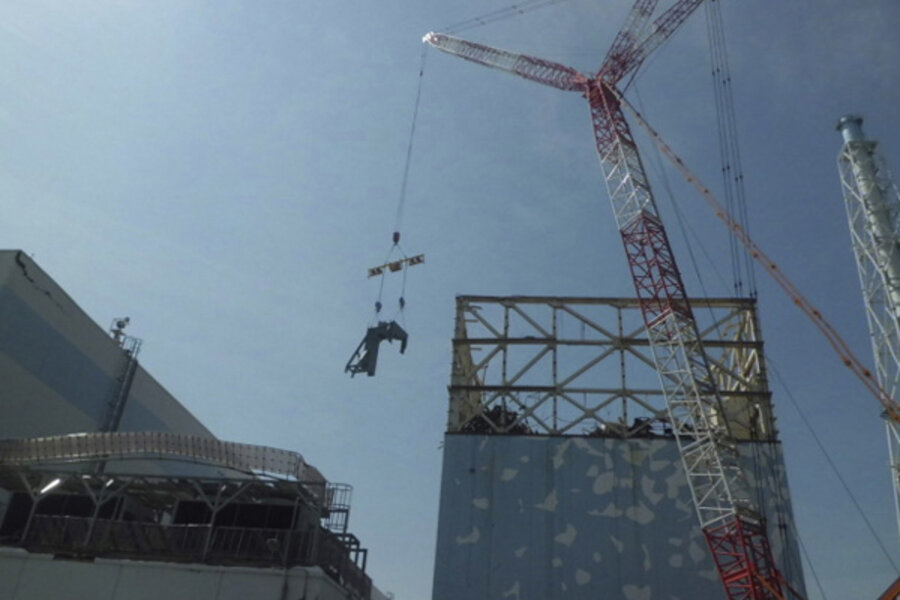How Japan's Fukushima disaster may exacerbate population woes
Loading...
| Tokyo
This week Japan announced that its population has fallen for the second year in a row, which – along with a shrinking workforce – will pose huge challenges for its economy and society.
While these trends were set before the triad of disasters began with the March 11 earthquake, the Fukushima Daiichi nuclear power plant disaster may exacerbate them.
“Unless the Japanese workforce makes some huge gains in productivity – and Japanese workers are already very productive – there are no prospects for growth in the domestic economy,” says Jo McBride, head of the Japanese Pension Industry Database.
The population fell by 122,679 to 126,230,625 people in the year to March 31, according to the Ministry of Internal Affairs and Communications. The number of deaths last year numbered 1,212,094, while births totaled 1,065,909.
The figures were not updated for Iwate, Miyagi, and Fukushima prefectures, as those areas hardest-hit by the March disasters weren’t surveyed. When the 22,000-some deaths from the earthquake and tsunami are factored in, the actual decline will be larger.
Struggling with the demographic shift
Japanese have the best longevity and oldest population in the world, combined with a low birthrate. At this rate, the population will drop from 126 million to 90 million by 2050, and Japan is already beginning to struggle with the implications of this demographic shift.
The Japanese workforce peaked back in 1995 at 87 million, and has been falling since, to about 50 percent of the population this year. This shrinking workforce will almost inevitably lead to a contracting domestic market, and be forced to support a growing elderly population.
“Once upon a time many young workers paid into the pension system, but now that pyramid has been turned upside down,” says Hiroshi Udo, director of the Dai Ichi Life Research Institute in 2009.
Though the strain on the public and private pension system is already showing, it is only one of the problems that a declining population is creating.
While Japanese companies are already expanding more aggressively abroad due to the state of the domestic market, that won’t solve the vicious cycle back home that the shrinking population is causing. Fewer people mean weak consumer demand, which is helping to fuel deflation; this in turn is both bad for the domestic economy and strengthens the yen, making exports – the only hope for growth – less competitive.
Other advanced industrial nations have mitigated the problems of an aging population with large-scale immigration – an option that Japan has steadfastly refused to support.
So where does Japan go from here?
Raising the birthrate – as France has successfully done – is effectively the only other option, say observers.
A big increase in child allowance was a central pillar of the Democratic Party of Japan’s (DPJ) manifesto when it won its historic election victory in 2009.
However, due to the dire national finances, the new government has so far only paid out half the promised 26,000 yen (about $340) a month to the parents of each child under 16. And following the damage to the economy from the March disasters, the DPJ has cancelled plans to increase the allowances, and is instead considering cutting the payments to wealthier families.
“I’d have as many kids as I could if I believed the government would pay the full amount of child support they promised and protect my rights at work,” says Misako Matsumoto, a childless Tokyo office worker.
Creating a more female-friendly work environment in Japan would appear to be an obvious answer to nudge the economy: tapping the vastly underutilized half of the workforce when labor is in short supply, and encouraging women to have more children in the knowledge they could return to work.
Still, progress has been glacially slow, with discrimination rife and female managers a rarity. Some have hopes that the March disasters were a way for Japan to start afresh on many levels, though it's too early to say if that will extend to an erosion of the old boys' club atmosphere in its corporations.
Concerns about radiation
In the post-disaster environment, there is now another disincentive to have children: concerns about radiation. Though long-term health implications of exposure to low doses of radiation is disputed, medical officials deem infants to be more prone to the dangers than adults.
“Before the disaster, I wanted to have another child, but now I don’t think I can. I used to work at the Fukushima Daini Nuclear Plant,” says Yuki Sato, referring to the facility a few miles from the stricken Daiichi facility.
Ms. Sato and her 6-year-old son are now living at an evacuation center in Koriyama City on the western edge of Fukushima Prefecture. She is concerned about radiation she may have been exposed to following the accident.
“I asked the medical staff at the center whether a baby would be affected,” says Sato. “They said it ‘should' be OK.' What kind of answer is that when talking about having a baby?”
Although few people were working as close to the Fukushima accident as Sato, women across the northeast of Japan, and as far away as Tokyo, are concerned about having children amid ongoing fears of the effects of radiation.





